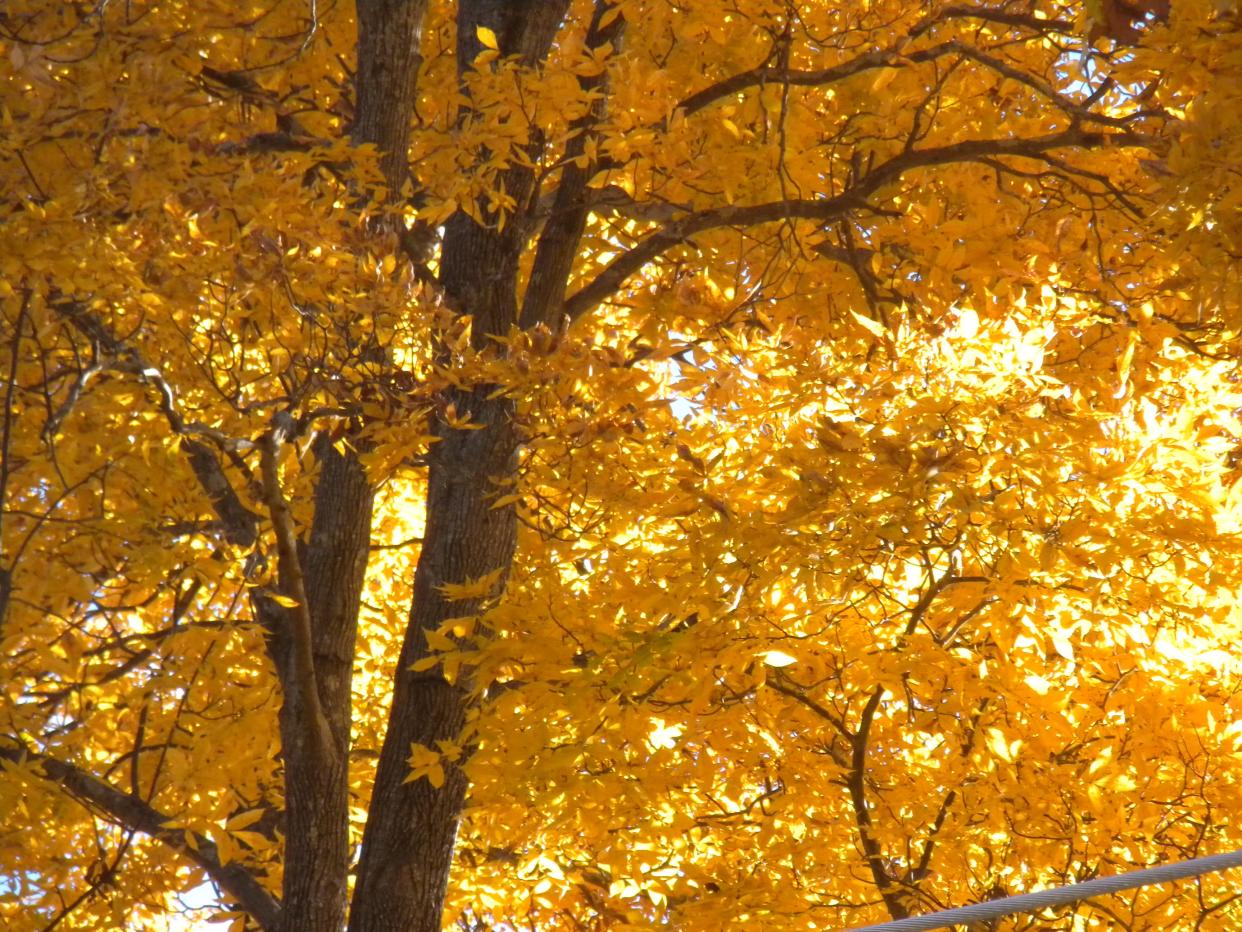Pignut hickory provides nuts for critters, a golden fall canopy for humans | Mystery Plant

A hickory tree is just a way for a hickory nut to make more nuts. — a botanical saying
You will, I hope, pardon me if I brag on a bit of scenery in my neighborhood here in Columbia, South Carolina.
Near our home is a small public park (it’s called “Emily Douglas Park”), with a steep slope on one side containing quite a number of trees which have been there easily for 100 years…that is, they were present not so long after the streets were originally laid out on this side of town.
Things to do in Tallahassee: Sauce Boss hits the park at Sundown, Hot Mess is in Southwood
Moss and lichen: Things that grow on trees: From roots to crown, it's a community
Fall foliage: Tallahassee trees are putting on a color show this November | Harrison
The trees include mostly oaks, but our Mystery Plant (not an oak) is also well represented.
Pignut hickory, Carya glabra, is potentially a very large tree, native to much of the eastern USA, from southern Canada to western Louisiana, and much of Florida. The trunk of fully mature trees will feature tightly braided bark, the “braids” or ridges commonly forming tight diamond patterns. The freshly cut wood is fragrant, and the lumber is very strong and durable.
And of course, many backyard chefs are convinced that the wood from this species (and briquets made from it) are the best, burning long and very hot. The flowers, like all of its close relatives, are either male or female, on the same tree. Male flowers are tiny, strung together on a wiggly stalk, and they release pollen (plenty of it) in the spring.
The female flowers occur in tiny clusters, and these eventually form the fruits. The fruits themselves are maturing about this time of the year. Each fruit is a hard-shelled nut, and each of the nuts is encased in a leathery, somewhat hardened husk. When ripe and falling from the tree, the nut is still enclosed within the husk, most of the time.

The nuts are great for wildlife food, prized by a deer and turkeys, as well as hogs. And of course, humans like to eat the fruits. It can be a bit of work extracting the meat from the shell, but the nut-meat provides for some pretty tasty dishes.
But this essay is mostly about those leaves. The trees are completely deciduous, losing their leaves, all of them, before putting on a new crop in the spring. The compound leaves are characteristic for the genus, featuring a stalk and a well-developed midrib to which a number of leaflets are attached.
In the case of our Mystery tree, there will be 5 leaflets (rarely more), and one of those five is at the very end of the midrib. The first two leaflets will be smaller, generally, than the “distal” 3, and all of them are a bit football-shaped, sometimes narrowly so. The lower 4 leaflets tend to be a bit asymmetric while the terminal leaflet is quite even on both sides. All the leaflets will be finely toothed.
This species is especially renowned for its brilliant gold-yellow autumnal foliage.
It's a bit corny to describe the autumnal change in leaf color as a miracle; we scientists have come up with all the details concerning this seasonal change. Nevertheless, views of masses of fall color can be quite breathtaking, and if you’re a flat-lander like me, you don’t need to go to the mountains to enjoy it.

John Nelson is the retired curator of the A. C. Moore Herbarium at the University of South Carolina in Columbia SC. As a public service, the Herbarium offers free plant identifications. For more information, visit www.herbarium.org or email johnbnelson@sc.rr.com.
Never miss a story: Subscribe to the Tallahassee Democrat using the link at the top of the page.
This article originally appeared on Tallahassee Democrat: Pignut hickory tree offers nuts for critters, foliage for humans

